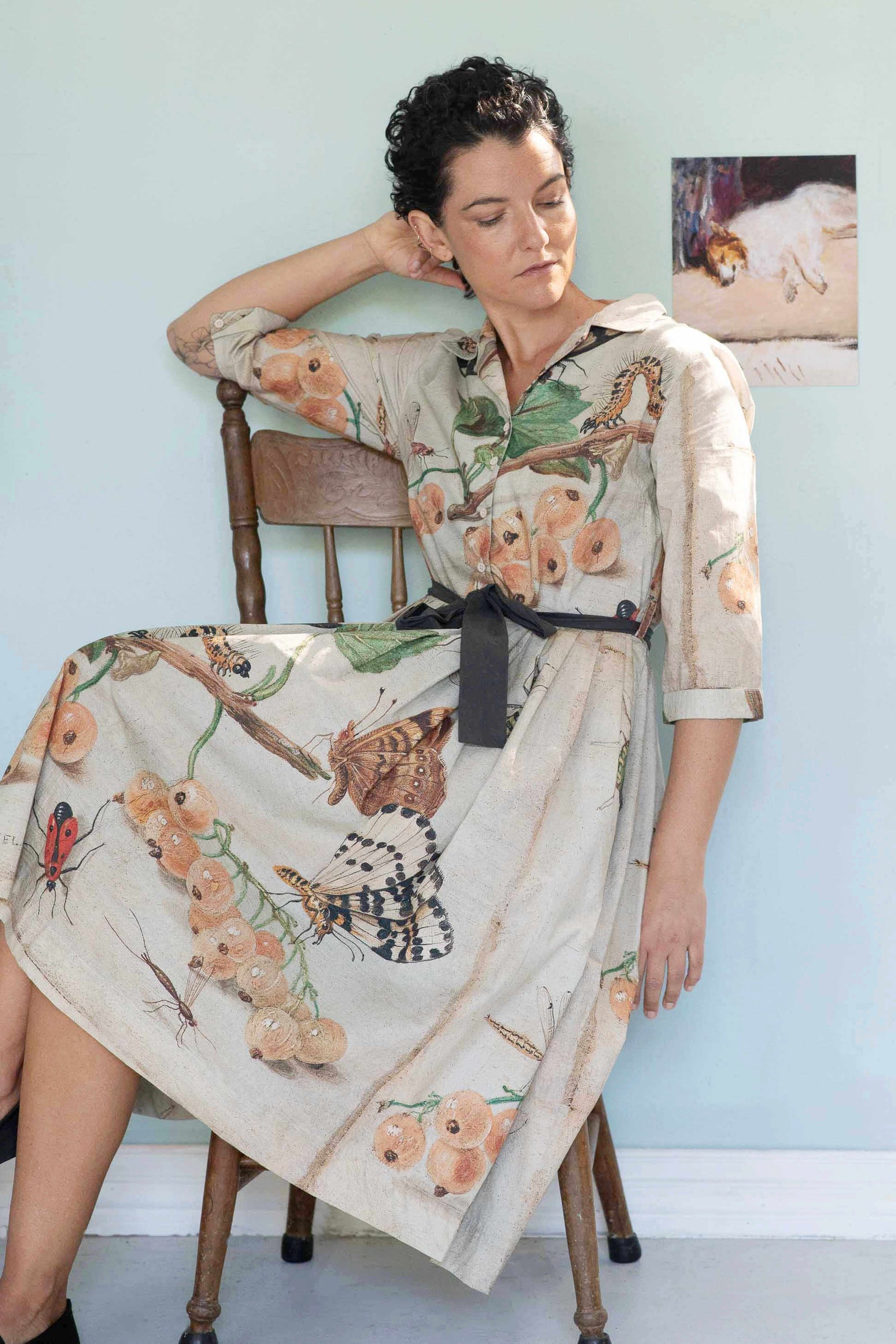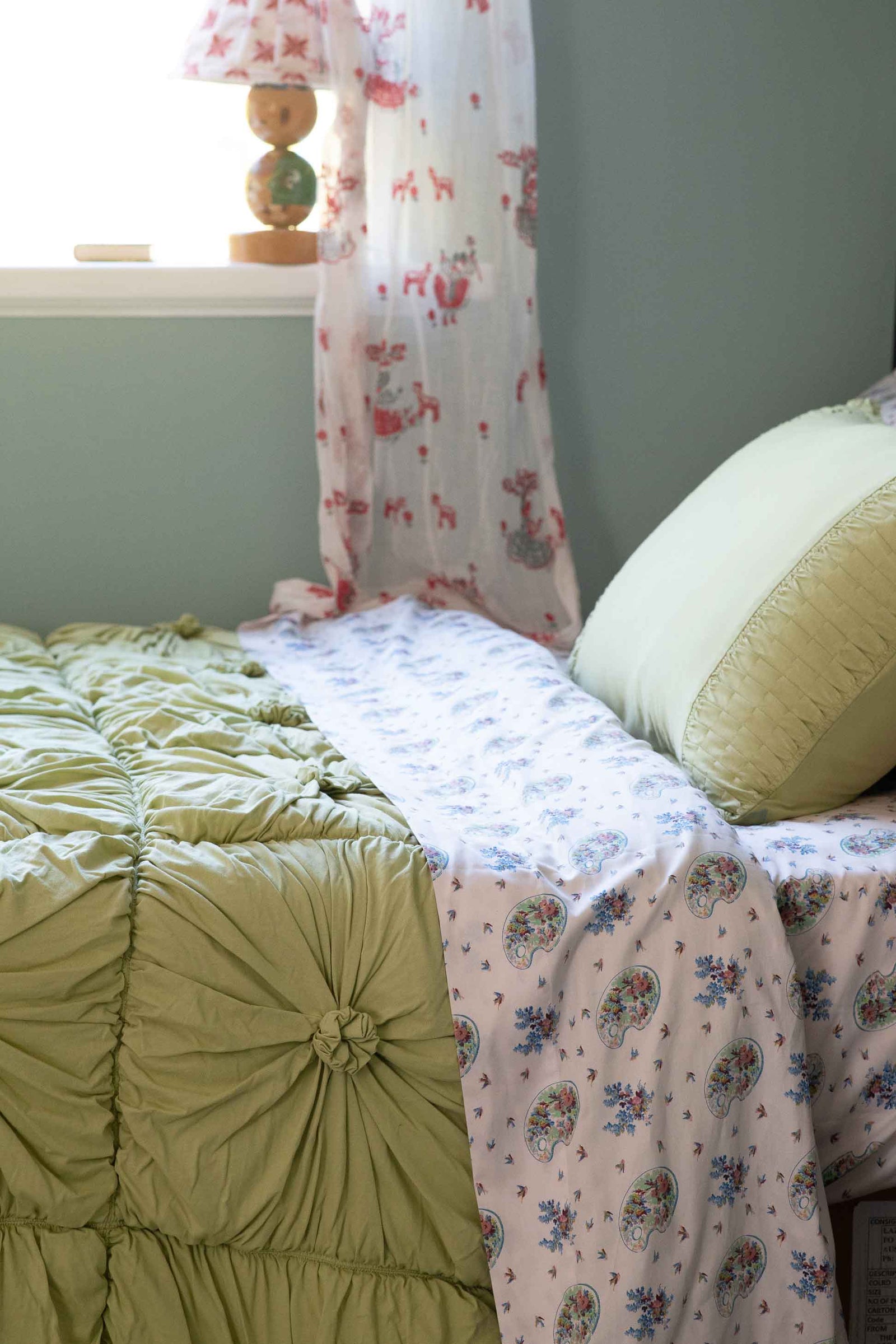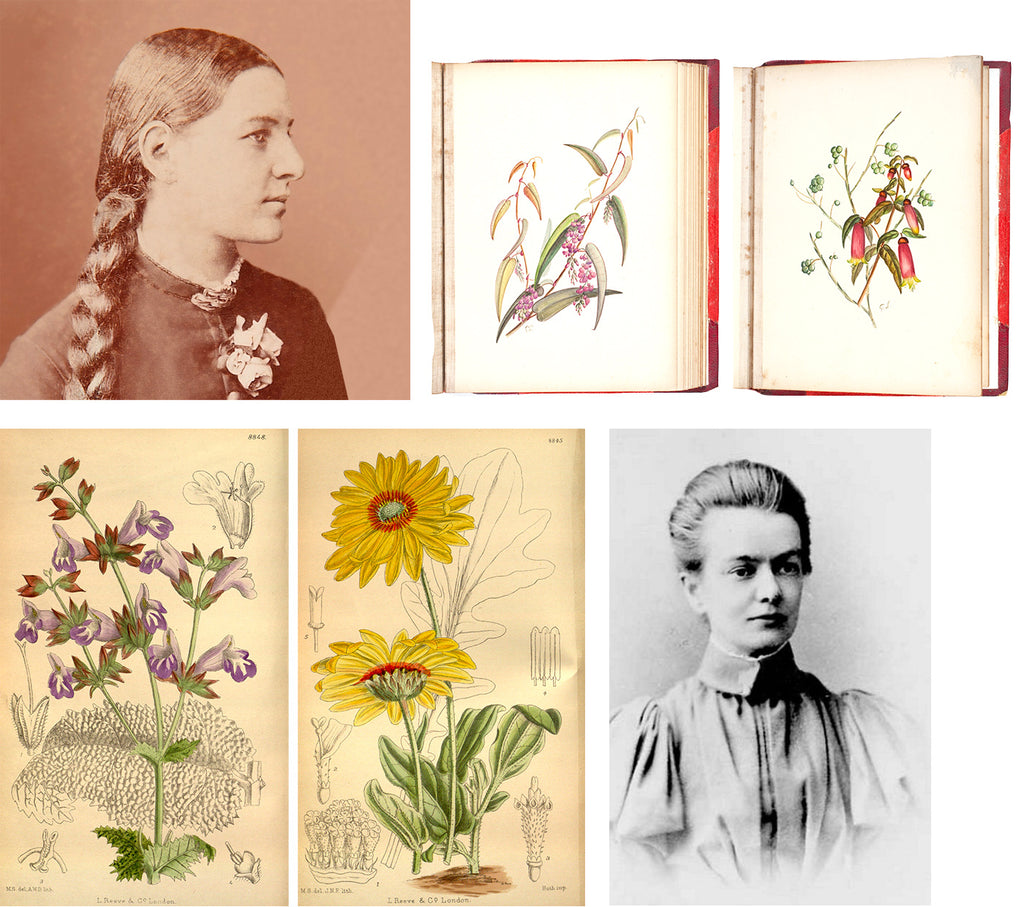To celebrate International Women's Day this year we've taken a step back in time.
We've been inspired by two female botanical artists who lived 100 years ago. Today their artwork feels just as relevant and evocative.
Imagine the abundant world of flowers, plants and creatures they would have encountered when living in Australia back then!
Gertrude Lovegrove was an artist who lived in NSW until the ripe old age of 101 (1859-1961).
She contributed to The Wild Flowers of New South Wales by botanist William Baeuerlen published by Angus & Robertson, Sydney (1891).
Little is known about how she came to illustrate this book. Only one volume was ever published in 1891. It was intended to be published in 25 parts.

In 2007 all the Lovegrove paintings for the remaining parts were held in specially made boxes by Berkelouw Book Sellers, Berrima, NSW. It is understood they had remained undiscovered until after Gertrude's death in 1961.
Matilda Smith (1854–1926) was a botanical artist from London whose work appeared in Curtis's Botanical Magazine for over forty years. She became the first artist to depict New Zealand's flora in depth, the first official artist of the Royal Botanic Gardens at Kew and the second woman to become an associate of the Linnaean Society (a learned society dedicated to the study and dissemination of information concerning natural history, evolution, and taxonomy).
Born in Bombay, India, her family emigrated to England when she was a small child. Her interests in botany and botanical art were fostered by her second cousin who was then the director of Kew Gardens and a talented draughtsman in his own right. He brought Smith into the Gardens to train as an illustrator.
Despite her limited artistic training, Smith was encouraged to show the magazine her own work and in 1878 one of her drawings was first published.
Smith rapidly became a key illustrator at the magazine. In the period 1879–1881, each issue included some 20 of her drawings, and by 1887 she was almost the sole illustrator for the magazine.
In 1898, she was appointed the magazine's sole official artist. Over the forty-odd years between 1878 and 1923, Smith drew more than 2,300 plates for the magazine — although she received much less recognition for this achievement in her own lifetime than her male counterparts.
She was dismissed as an artist of inferior skills, praising her faintly for her charm, her work ethic, and her usefulness in creating a record of otherwise unpictured plants.
This pattern was first noticeable in the Victorian era of progressively devaluing botany and botanical art as women entered the field professionally.
Other authors, however, both now and in her own day, have admired the clarity and precision of her drawing, and her four decades of employment at the centre of the British botanical world testifies to a continuing value for her skills.
She was especially admired for her ability to create credible illustrations from dried, flattened, and sometimes imperfect specimens. Her exceptional contributions to Kew Gardens led to her being designated the first official botanical artist of Kew Gardens in 1898. In 1921, the year she retired from Kew, she was named an associate of the Linnean Society — only the second woman to have achieved this honour.
She was also awarded the Silver Veitch Memorial Medal of the Royal Horticultural Society for her botanical draughtsmanship generally and for her contributions to Curtis's Botanical Magazine in particular.
So we're bringing these special images back in garlands to decorate your spaces. Bring the wild flora and fauna indoors with these timeless floral paintings.
Let's celebrate these female botanical artists and hope that in some way they feel our gratitude and appreciation for the beauty they created.
This is our love letter to nature.

All images are in the public domain and are sourced from the generous open access schemes from various museums.
This is an excellent initiative that opens up so many beautiful images to be seen and enjoyed again.
The Gertrude Lovegrove images are courtesy of Mitchell Library, State Library of NSW.
The Matilda Smith illustrations are generously made available by the Biodiversity Heritage Library which improves research methodology by collaboratively making biodiversity literature openly available to the world as part of a global diversity community. The prints are from Vol. 146 of Curtis's Botanical Magazine 1920
Each image is digitally printed onto organic cotton sateen, cut into little flags with a raw and stitched edge and sewn into a flag garland.
Hand made in Australia.
Thanks to Wikipedia for the article on Matilda Smith
Thanks to Australian National Herbarium for the information on Gertrude Lovegrove.




